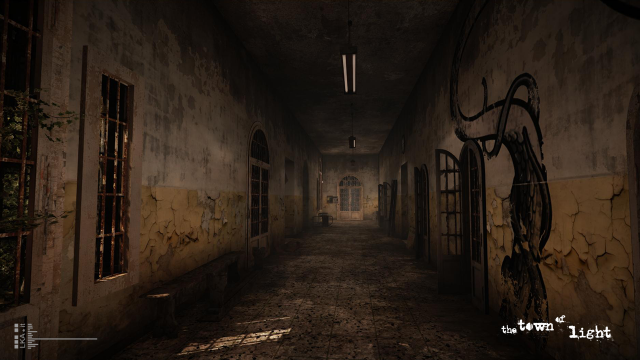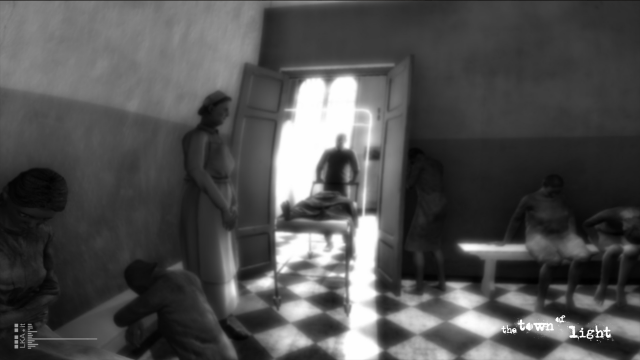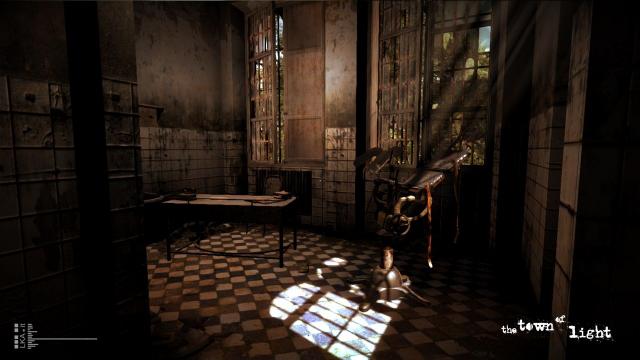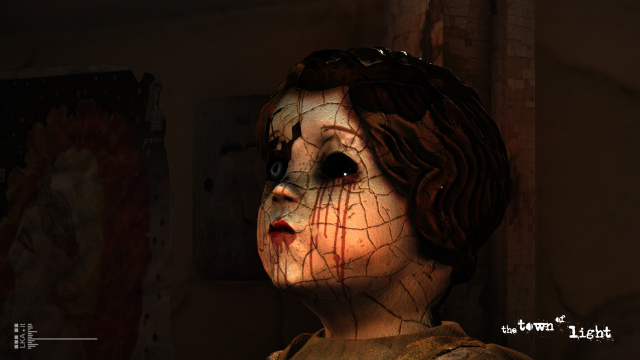Existing User Log In
New User Registration
Register for a free account to gain full access to the VGChartz Network and join our thriving community.




LKA
Adventure
 03/24/17 THQ Nordic
03/24/17 THQ Nordic  (Add Date)
(Add Date) (Add Date)
(Add Date)
| Owners: | 0 |
| Favorite: | 0 |
| Tracked: | 0 |
| Wishlist: | 0 |
| Now Playing: | 0 |
On the surface, LKA’s The Town of Light looks like yet another horror game that the medium has become accustomed to over the years. An isolated player explores an abandoned building while uncovering the mysteries surrounding it. However, as you explore the ruins of the Ospedale Psichiatrico di Volterra in Tuscany, you'll soon realize that The Town of Light effectively manages to set itself apart. Although short and with some issues, The Town of Light is a harrowing experience that will continue to haunt you even after you have finished the story.

Aimed at an adult audience, LKA has successfully crafted a painful story containing mature themes with great sensitivity and respect. Players control Renee as she returns to the Ospedale Psichiatrico di Volterra decades after it has been abandoned. As she walks through the ruined halls she relives the horrific experience of being a teenage patient at the psychiatric hospital through flashbacks in an attempt to discover what happened to her there.
A particularly haunting scene occurs early on in the game when Renee recounts how one of the hospital’s staff lured her using her doll Charlotte, one of her only sources of solace, to sexually abuse her. Renee’s story is not easy to tell, but LKA pull it off admirably by tackling mature themes backed with impressive research.
Although Renee’s story is fictional, what the character endures is based on real events. The psychiatric hospital at Volterra is a real place that was closed down in the 1970s when Italy passed Law 180; a law which changed how mentally ill patients were to be cared for. This backdrop allows LKA to express themes such as mental illness and the inhumane treatment of patients in an authentic way while telling a powerful story.

The research that LKA has conducted can be seen through the strong visuals as well. The hospital is meticulously reconstructed, both as it is today and how it was in the late 1930s when Renee was a patient there. The overgrowth of vegetation, the old graffiti, and the ruined walls all help reinforce the powerful sense of abandonment and isolation.
There are also fine details such as rusted medical tools and strewn medical records that help bring The Town of Light to life. There is minor graphical pop-in, but this doesn’t significantly impact the experience and overall the visuals are impressive for a Unity Engine game. This, coupled with LKA’s attention to detail, helps create a very believable atmosphere.
Like the visuals, the sound design in The Town of Light is quite strong as well and further enhances the atmosphere. Haunting wails and screams will echo across the halls as Renee’s memories flood back. The sound of children laughing is also used effectively once in a while to juxtapose Renee’s stolen innocence. Original pieces of music will play during certain parts of the game and these painfully beautiful compositions work well in the context of The Town of Light and reinforces the mood of isolation.
Although strong overall, there are some aspects of the sound design that could have been better. The sounds of Renee’s footsteps becomes monotonous and quite repetitive, for example. Also, I found the English voice acting to be uneven. At times it was strong, but generally it felt wooden. Wisely, LKA included an option to use the native Italian voices while leaving the actual game’s text English.

Although the visuals and sounds make walking the halls of the abandoned psychiatric hospital intense, the gameplay does quickly become lacklustre. The Town of Light, for the most part, is a linear game, although there are moments in the game that allow the player to influence how the story unfolds, which provides some replayability. Players will primarily take Renee from room to room to trigger flashbacks that are typically shown through animated sequences. There are some basic puzzles to solve and Renee can interact with various objects, but there really isn't that much to do.
The Town of Light is also a short game. Most players can probably finish it in about three hours or so, although you can go back and try to unlock various chapters through different playthroughs to see how Renee's story changes if you so desire. The hospital also opens up towards the end, allowing you to explore previously inaccessible rooms and areas. However, outside of exploring and admiring LKA’s meticulous research and the minute details of the hospital, there aren't many reasons to return.

Even though it is short and repetitive, The Town of Light’s powerful, mature story along with its strong presentation makes it a worthwhile experience. Renee’s story is often difficult to bear; it forces you to face the reality of what humans are capable of doing to others in the name of care. It also unflinchingly deals with themes that are rarely approached in gaming. Those looking for a game that proves the medium can tell memorable stories with respect and maturity will find The Town of Light a worthwhile addition to their library.